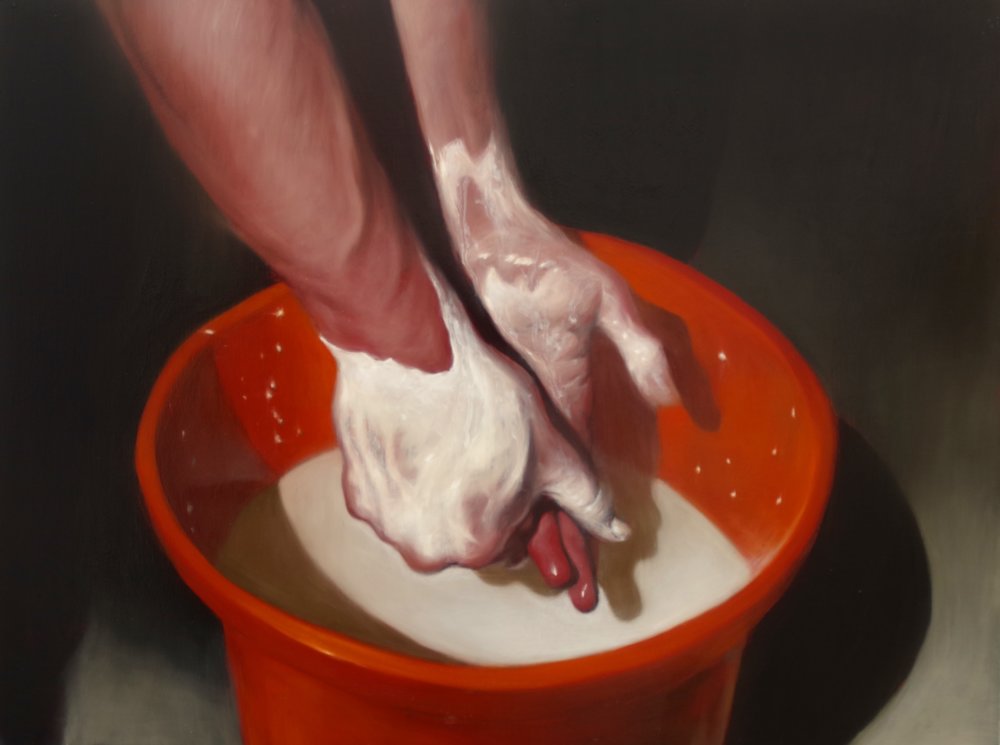Since the early 1990s, Scottish artist Ken Currie has been known for his closely observed and often unsettling portrayal of the body, depicting the damage inflicted by war and conflict, illness and decay as a response to what he felt was the sickness of contemporary society. Currie’s rich, luminous paintings address the tragic themes of modernity, balancing the opposing imagery of mechanised destruction and degradation with the generative, creative potential of the human body.
The works in the present exhibition depict the figure transformed by acts of unseen violence or engaged in mysterious medical procedures. The nightmarish painting Krankenhaus portrays ailing subjects treated with arcane medical instruments in a makeshift surgery, uncannily juxtaposing paraphernalia from the abattoir and misplaced players from a military band.
Alongside this painting, a series of images titled War Paint marks Currie’s continued inquiry into facial disfigurement, portraying young men with strong youthful features transformed by war into what Currie calls “monstrous violations of all our ideals of beauty and harmony”. In these works, Currie pays homage to the images of reconstructive surgery recorded by British artist and former surgeon Henry Tonks during World War I. Veiled references to the scars of war can be seen in the bruiselike blue-blacks of the over painting, lending the works a disturbing edge of barely concealed trauma.
The theme of disfigurement continues in the painting Rictus, from which the exhibition takes its title, and which relates to a fixed grimace or grin. Within this painting a military general can be seen studying a portrait of a survivor of atomic warfare. The portrait itself is intended to be difficult to look at, as Currie sets out to expose the true human cost of mechanised combat, with grotesque distortions, misplaced eye sockets and lolling mouth cavity. The character of the officer, inspired in part by John Singer Sargent’s painting General Officers of the Great War faces away from the viewer, his reaction shielded from view.
In contrast, two smaller paintings titled The Lime Bucket, and Whitened Hands depict hands scrubbed and dripping with lime solution, a substance usually intended to degrade or decontaminate. Relating back to the mysterious procedures in many of Currie’s quasi-medical scenes, the symbolism is shrouded in ambiguity, as though stemming from partially-recalled moral emblems or allegories for contemporary life.
| Duration | 08 November 2017 - 09 December 2017 |
| Times | Monday to Saturday: 10am - 6pm |
| Cost | Free |
| Venue | Flowers (Cork Street) |
| Address | 21 Cork St, London, W1S 3LZ |
| Contact | 020 7439 7766 / info@flowersgalleries.com / www.flowersgalleries.com |

